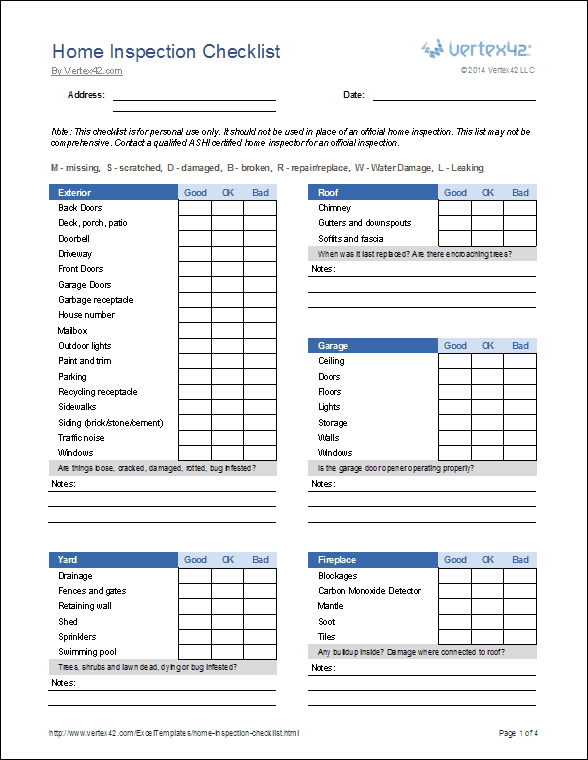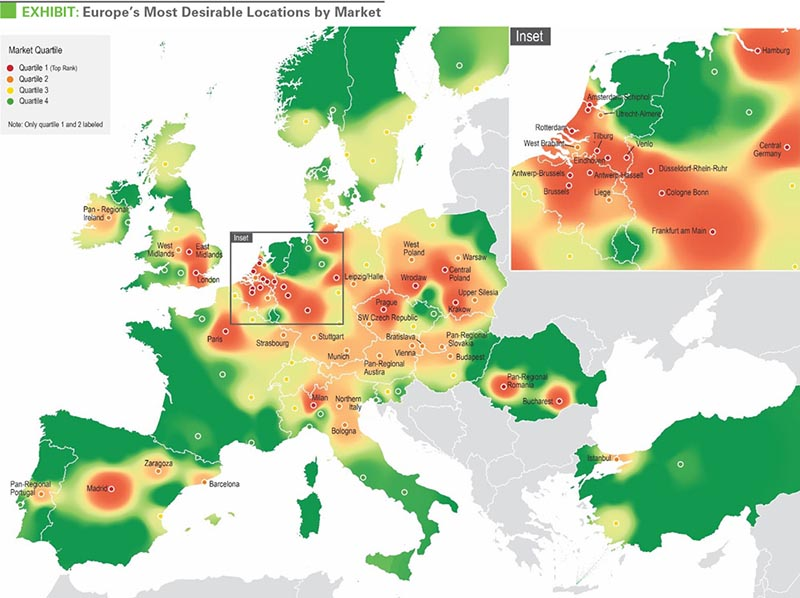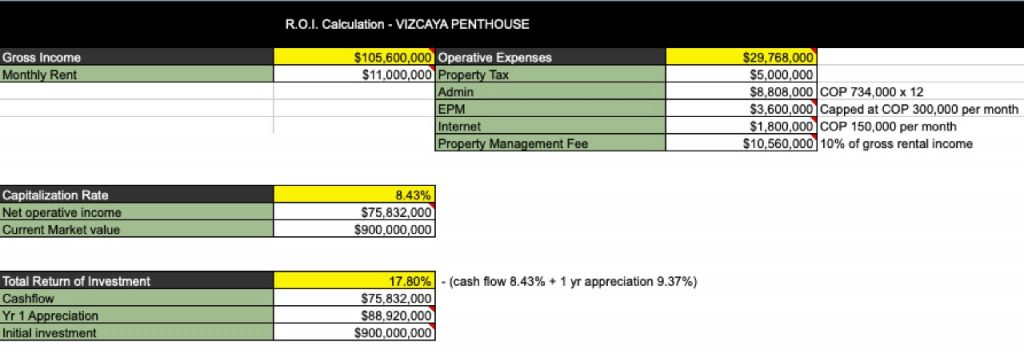Maudhui ya Ndani (Ulaya-Maalum): Utafiti Maalumu wa Mali huko Uropa
Lesson Learning Objectives:
- Gain a thorough understanding of property conditions, including structural integrity and potential renovations, to accurately estimate investment costs and returns.
- Understand the complexities of legal title and zoning laws across European countries to navigate the legal landscape effectively and ensure property usability aligns with local regulations.
- Learn about rental regulations in various European cities, assessing how rent control laws and short-term rental restrictions can impact investment profitability.
- Utilize a home inspection checklist to systematically evaluate and document a property’s condition, ensuring all critical areas are inspected before making investment decisions.
- Analyze neighborhood and local market factors, such as crime rates, public amenities, and market trends, to gauge a property’s potential for appreciation and rental demand.
6.1 Property-Specific Research in Europe
When conducting research on an investment property in Europe, a thorough understanding of the property itself is essential. This involves evaluating its physical condition, legal status, and overall suitability as an investment.
- Property Condition
Conducting a property inspection is a critical step in evaluating the property’s structural integrity and identifying potential repair or maintenance needs. In countries like France na Italy, many older properties may require extensive renovations to meet modern standards. Investors should factor in the costs of repairs and refurbishments when calculating their potential return on investment (ROI). - Legal Title and Zoning
In Europe, property ownership and zoning laws can vary significantly by country and region. It is essential to verify the legal title of the property to ensure that there are no unresolved ownership disputes or liens. In countries like Germany na Spain, understanding local zoning laws is crucial for determining the property’s permissible uses, particularly for commercial or development purposes. - Rental Regulations
In some European cities, strict rental regulations may limit an investor’s ability to rent out a property. For example, Berlin has rent control laws that cap how much rent can be charged, which may affect the profitability of rental investments. Similarly, short-term rental regulations in cities like Barcelona may restrict platforms like Airbnb.
Kielelezo: Home Inspection Checklist Template
Maelezo:
This template serves as a comprehensive checklist for inspecting a home. It is divided into categories such as Exterior, Roof, Garage, Yard, and Fireplace, with rows listing specific elements like doors, gutters, windows, and fences. Each row includes columns to evaluate the condition as Good, OK, or Bad. Notes sections are provided for recording additional details or observations. The checklist highlights potential issues like scratches, leaks, or damage, helping users systematically assess a property’s condition.
Mambo muhimu ya kuchukua:
- The checklist covers all key areas of a home, including structural components, exterior features, and safety elements.
- Users can evaluate the condition of specific items using a simple Good/OK/Bad scale.
- It includes space for detailed notes, allowing for custom observations or recommendations.
- The template emphasizes identifying issues like scratches (S), damage (D), water damage (W), or leaks (L) to ensure thorough inspections.
- It provides a structured approach to detecting and documenting maintenance or repair needs during a home inspection.
Application of Information:
This checklist is ideal for homebuyers, sellers, and inspectors to ensure a thorough evaluation of a property before purchase or sale. It helps users systematically identify areas requiring maintenance or repairs, ensuring transparency and better decision-making. For learners, this template demonstrates how organization and detail are critical in property assessment processes.
6.2 Neighborhood and Local Market Research in Europe
Understanding the local market and neighborhood is vital for gauging the property’s potential for appreciation and rental demand.
- Crime Rates and Safety
Researching local crime rates and overall neighborhood safety is important for determining the attractiveness of the area to potential tenants or buyers. Areas in cities like London na Paris that have low crime rates tend to attract more families and long-term tenants, which could lead to higher occupancy rates. - Access to Amenities and Public Transport
In European cities, proximity to public transport, schools, parks, and other amenities greatly influences property value. Properties near metro stations in cities like Madrid na Rome typically have higher rental demand due to ease of commute. - Local Market Trends
Analyzing local real estate trends is crucial for understanding the future potential of the investment. Look for areas that are experiencing gentrification or economic revitalization, as these areas often see faster appreciation. For example, parts of East Berlin na Lisbon have seen rapid development and rising property values due to local investment and infrastructure improvements.
Kielelezo: Europe’s Most Desirable Locations by Market
Maelezo:
This heat map highlights the most desirable markets for property investment in Europe, divided into quartiles based on desirability. Areas in red represent the most desirable (Quartile 1), followed by orange, yellow, and green (Quartiles 2 to 4). Key cities such as London, Paris, and Frankfurt are prominent in the top quartile, reflecting their strong economic activity, infrastructure, and demand. The inset map provides detailed insights into central Germany and surrounding regions, emphasizing dense clusters of high-demand markets. This visual demonstrates the geographical disparities in market desirability.
Mambo muhimu ya kuchukua:
- London, Paris, and Frankfurt rank in the most desirable locations, indicating strong demand for real estate and investment opportunities.
- Central Germany, the Benelux region, and northern Italy also exhibit high desirability, driven by economic strength and logistics hubs.
- Peripheral regions, such as southern Spain and parts of Eastern Europe, fall into the lower quartiles, reflecting less robust demand.
- The map emphasizes regional hubs like Rotterdam, Düsseldorf, and Munich as critical drivers of market activity in Europe.
- Geographic proximity to major trade routes, urban centers, and infrastructure significantly influences market desirability.
Application of Information:
This map is essential for real estate investors, urban planners, and businesses to identify high-demand markets in Europe. Investors can focus on red zones for maximum return potential, while green areas may present opportunities for growth or cost-effective investments. For learners, the map demonstrates how economic activity and infrastructure shape real estate markets and investment opportunities.
6.3. Financial and Risk Analysis in Europe
Before making an investment, it’s essential to conduct a financial analysis that assesses both the potential return and the risks involved.
- Cash Flow Analysis
Cash flow is a crucial element of any real estate investment. Calculate the net rental income by subtracting operating expenses (property taxes, maintenance, insurance) from rental income. In countries like Switzerland, where property taxes are lower, investors may see higher cash flow compared to cities like Amsterdam, where taxes are higher. - Risk Factors
Identify potential risks, including market volatility, government regulation changes, na economic downturns. For instance, Brexit has impacted the London real estate market, causing fluctuations in property prices and demand. Investors must also consider risks like currency fluctuations if they are investing in a country outside the Eurozone.

3. Exit Strategy
Investors should plan an exit strategy that outlines when and how to sell the property. In cities with rapid appreciation, such as Dublin au Milan, selling after significant capital gains might be beneficial. Conversely, in slower markets, a longer hold period may be required to realize returns.
Kielelezo: ROI Calculation: Vizcaya Penthouse
Maelezo:
This table illustrates the Return on Investment (ROI) calculation for a penthouse in Vizcaya, breaking down the components of gross income, operative expenses, capitalization rate, na total return on investment. The gross income is derived from a monthly rent of $11,000,000, totaling $105,600,000 annually. Operative expenses, including property tax, administration fees, and internet, amount to $29,768,000 annually. The capitalization rate is calculated at 8.43%, and the total ROI stands at 17.80%, which combines annual cash flow and property appreciation.
Mambo muhimu ya kuchukua:
- Gross income totals $105,600,000, primarily from monthly rental income.
- Operative expenses account for $29,768,000, including property tax and a 10% property management fee.
- The capitalization rate of 8.43% reflects the property’s income potential relative to its market value of $900,000,000.
- The total ROI of 17.80% includes cash flow (8.43%) na yearly property appreciation (9.37%), emphasizing strong investment returns.
- Expenses like administration fees (COP $8,808,000 annually) are capped at reasonable rates, ensuring profitability.
Application of Information:
This data is critical for real estate investors to evaluate the profitability of investing in high-end properties. It highlights the importance of calculating gross income, expenses, and ROI to make informed decisions. For learners, this serves as an example of how to assess investment returns by combining cash flow, operating costs, and property appreciation into one metric.
Habari Muhimu ya Somo:
- Property inspections are vital for assessing structural conditions and identifying necessary repairs, which are crucial for calculating realistic investment returns, especially in regions with older properties like France and Italy.
- Understanding legal titles and zoning regulations is necessary to ensure the property’s usage complies with local laws, which vary significantly across European countries like Germany and Spain.
- Rental regulations can greatly influence investment decisions; for instance, Berlin’s rent control may limit returns, whereas Barcelona’s restrictions on short-term rentals could affect rental strategy.
- A Home Inspection Checklist facilitates a thorough assessment of property condition, highlighting potential maintenance or repair needs, which is crucial for ensuring investment quality and avoiding unforeseen expenses.
- Local market conditions and neighborhood characteristics, such as crime rates and proximity to amenities, play a significant role in determining the property’s desirability and potential for appreciation—important in cities like London, Paris, and Madrid.
Taarifa ya Kufunga:
Effective property research is crucial for successful real estate investment in Europe. This section equips you with the knowledge and tools to conduct detailed property, legal, and market analyses, enhancing your decision-making and investment outcomes.





